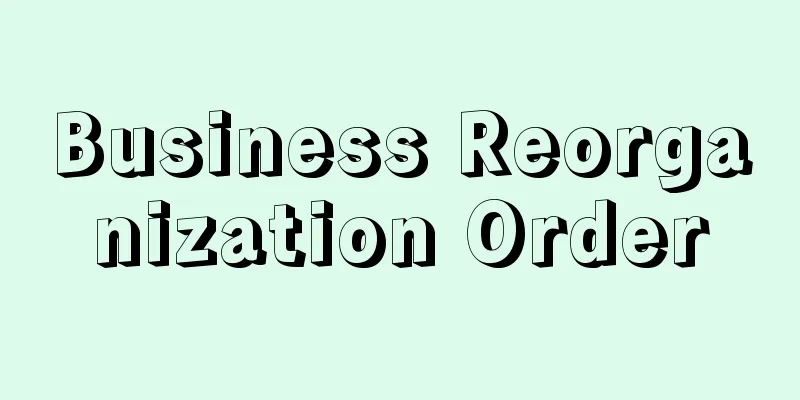Business Reorganization Order

|
… From [Conscription]With the start of the Pacific War, the conscription system was fully implemented as a "secret weapon" for mobilizing the labor force, and most of the targets were workers from peacetime industries and small and medium-sized businesses that had switched or gone out of business. In particular, the 1942 Business Reorganization Order forced many small and medium-sized businesses to be consolidated and closed down because they could not convert to military industries, and a group of workers who switched or went out of business and needed to be conscripted emerged. The expansion of the conscription system reached its peak with the third revision of the National Occupational Ability Declaration Order and the National Conscription Order in 1943, which made it possible for the state to conscript skilled and technical personnel of any type of occupation to be employed at designated workplaces (new conscription) and to conscript employees of specific companies and businesses together with their employers (current conscription). From [Controlled Economy]...On the other hand, the consolidation and reorganization of non-military enterprises was forced through in the name of corporate reorganization. The December 1941 Corporate Licensing Order implemented a full business permit system, and the May 1942 Corporate Reorganization Order promoted corporate reorganization with legal force. In addition, production materials and daily necessities were placed under strict control, and the controlled economy permeated every aspect of people's lives, but it could no longer be effectively implemented, and Japan was soon defeated in the war. *Some of the terminology used in reference to the "Enterprise Reorganization Order" is listed below. Source | Heibonsha World Encyclopedia 2nd Edition | Information |
|
… 【徴用】より… 太平洋戦争開始とともに徴用制は労働力動員の〈伝家の宝刀〉として全面的に発動され,その対象の多くは平和産業,中小商工業者の転・廃業労働力であった。とくに1942年の企業整備令で,多くの中小企業は軍需産業への転換が不可能だとして強引な統廃合の対象となり,徴用すべき転・廃業労働者群が出現した。徴用制の拡張は43年の国民職業能力申告令と国民徴用令の第3次改正で頂点に達し,国家が必要と認める場合には,いかなる職種の技能,技術者でも指定の職場に徴用でき(新規徴用),また特定企業・業務の従業者を事業主もろとも徴用(現員徴用)することが可能となった。… 【統制経済】より…一方,非軍需的企業については,その整理統合が企業整備の名のもとに強行された。1941年12月の企業許可令によって事業の全面的許可制が実施され,ついで42年5月の企業整備令によって企業の整理は法的強制力をもって促進された。このほか生産物資も生活必需物資も極度の統制下におかれるなど,統制経済は国民生活のすみずみにまで浸透したが,もはやすべてが有効に作用しえず,やがて敗戦を迎えた。… ※「企業整備令」について言及している用語解説の一部を掲載しています。 出典|株式会社平凡社世界大百科事典 第2版について | 情報 |
>>: Struggle against business consolidation - Struggle against business consolidation
Recommend
Klaus, Václav
Born June 19, 1941 in Prague, Czechoslovakia. Czec...
Kanden
(1) The fields provided for the Emperor under the...
Amplifier
A device with a circuit that amplifies minute elec...
Simony - Simony
In Christianity, simony is the buying and selling ...
Tsukumo Shell Mound
<br /> A shell mound site in Nishi-Oshima, K...
Karl IX
...Then Johan III (reigned 1568-92) elevated Finl...
Arabian race - Arabian
...The fact that their cheekbones are prominent a...
Rochester-upon-Medway
…Population: 146,000 (1994). Officially called Ro...
Central African Republic
◎Official name: Central African Republic. ◎Area: 6...
《Ki-soku Taigi》
…He passed the imperial examination in 1825, but ...
'Imād al‐Din
1125‐1201 A writer and official from the Ayyubid p...
Inawashiro bud moss - Inawashiro bud moss
... J . vulcanicola (Schiffn.) Steph. is found in...
Initial condition
An unknown function that satisfies a given differe...
Phosphorescence
P. An element with atomic number 15. It is in gro...
Tenkajaya products
This is a play that appears in Kabuki and Joruri a...









